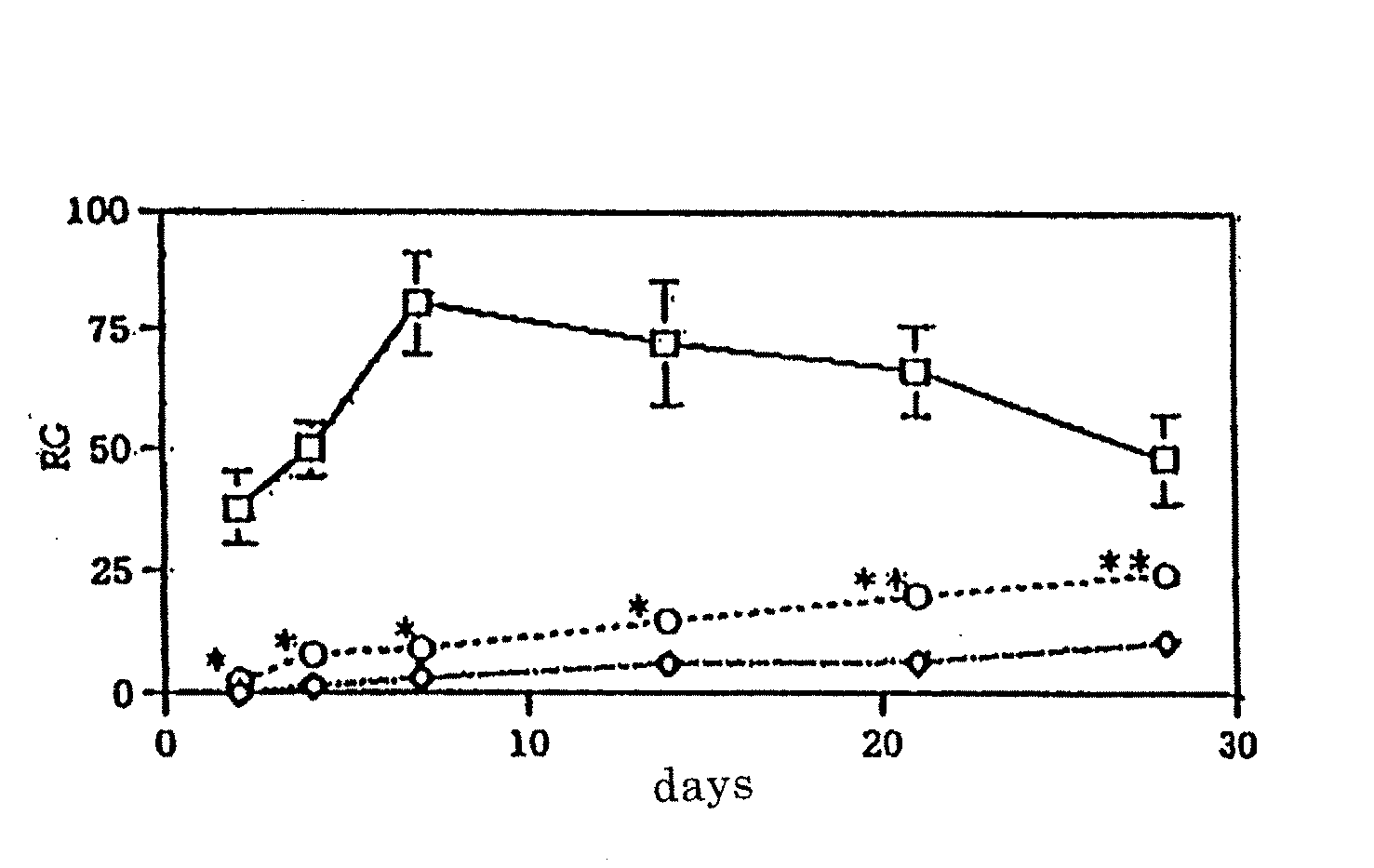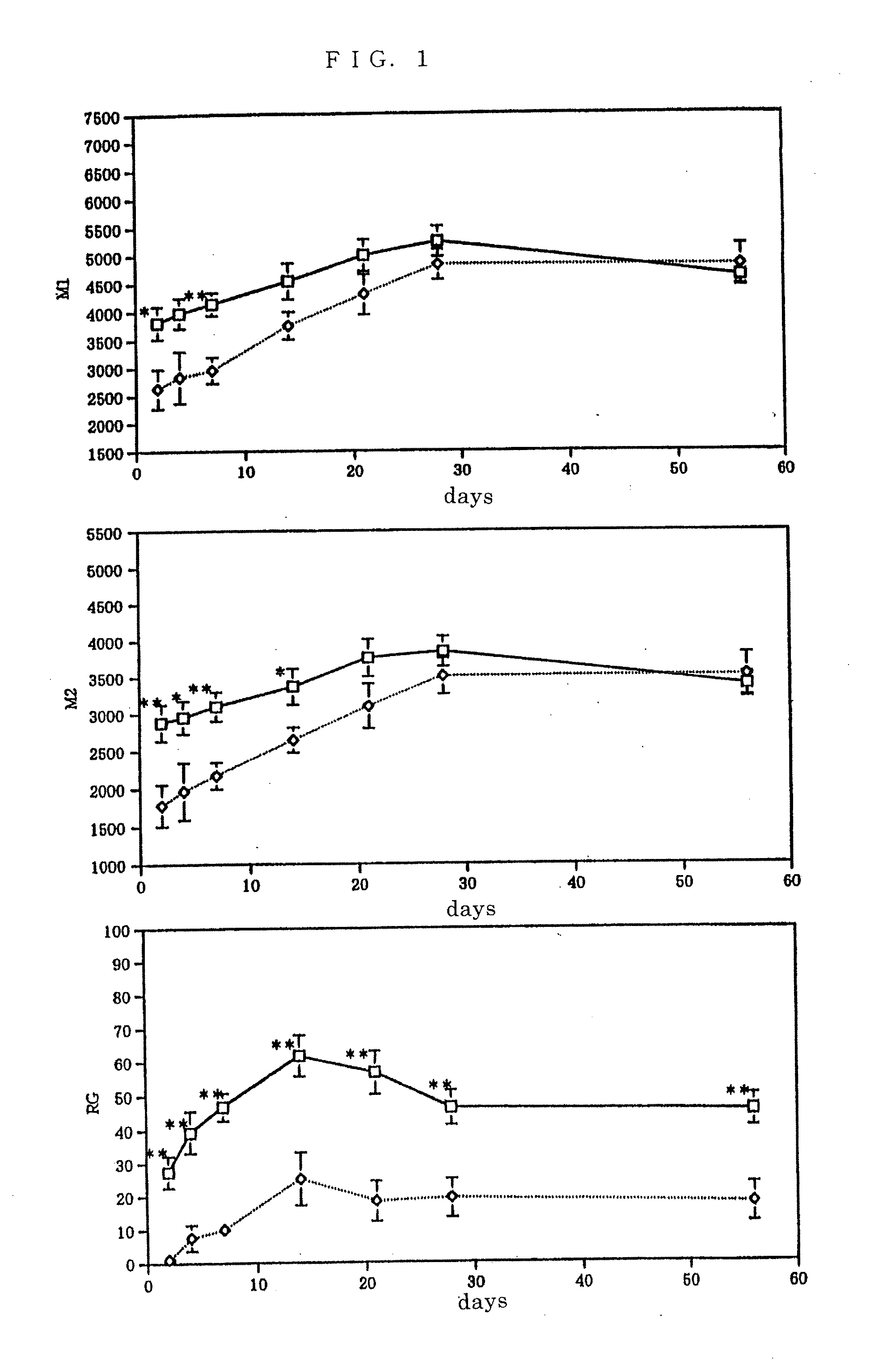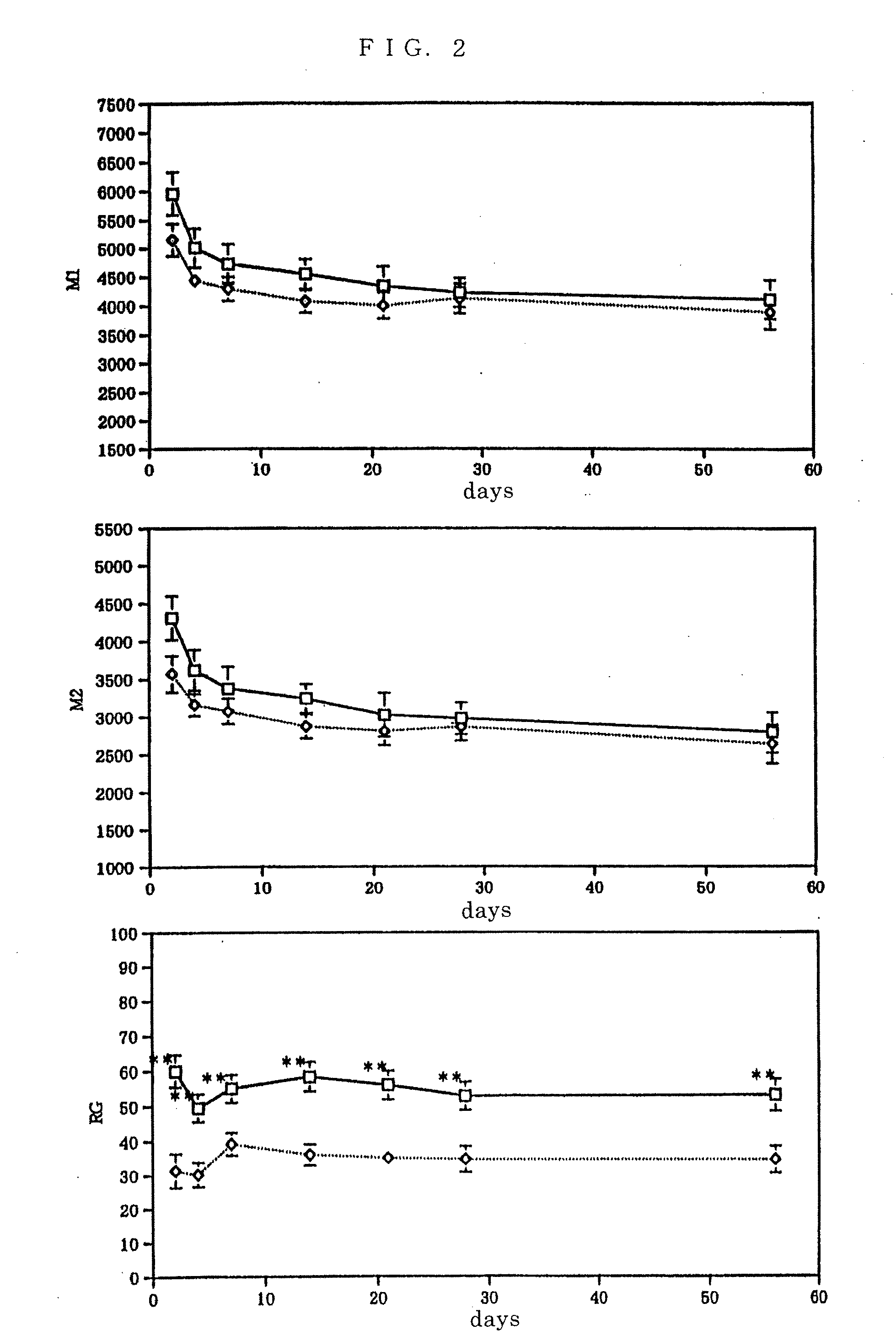Remedies for nerve damages
a nerve damage and nerve technology, applied in the field of nerve dysfunctional disorders, can solve the problems of lowering the phylactic function, difficult to prepare a large quantity of dendritic cells, and the efficacy of steroid-megadosed therapies remains controversial
- Summary
- Abstract
- Description
- Claims
- Application Information
AI Technical Summary
Problems solved by technology
Method used
Image
Examples
example 1
Generation of Spinal Cord Injured Model BALB / c Mouse)
[0043] BALB / c female mice (n=9) of 6 weeks old were used respectively, the eighth thoracic vertebra was laminectomized under ether anesthesia, and the left side of the spinal cord was cut half by a sharp blade, and spinal cord injured model mice (injured group; ⋄) were generated. After the spinal cord was injured, these mice showed palsy in the left lower limbs. A group of BALB / c female mice of 6 weeks old (n=9) wherein only laminectomy was conducted were used as a control (control group; □). The amount of spontaneous motion of each of the aforementioned mice were measured by using an action analyzing apparatus SCANET MV-10 (Toyo Sangyo; an apparatus wherein 144 sets of near infrared radiation sensors running in all directions are installed two-tiered in a square of 426 mm square) and motor function was evaluated after the surgery, on day 2 and 4 as in the acute stage, day 7 as the subacute stage, day 14, 21, 28, and 56 as the ch...
example 2
Generation of Spinal Cord Injured Model C57BL / 6 Mouse
[0044] With the exception of using C57BL / 6 female mice of 6 weeks old (n=16) instead of the aforementioned BALB / c female mice of 6 weeks old (n=9), evaluation of motor function was conducted with the use of the action analyzing apparatus SCANET MV-10 in the same manner as in Example 1. The result is shown in FIG. 2. The p value in the figure was calculated by using the Student's t test (**: p<0.01). As a result of comparing the evaluation of each motor function between a control group (□) and the injured group (⋄), an obviously significant difference was not recognized in M1 which shows the evaluation of horizontal movements (upper stand in FIG. 2) and M2 (middle stand in FIG. 2) throughout the acute, subacute, and chronic stage. On the other hand, in RG that shows the evaluation of vertical movements, an obviously significant difference was recognized in both groups until the chronic stage (lower stand in FIG. 2). The results of...
example 3
The Effect of Dendritic Cells Against Spinal Cord Injury
[0045] Spinal cord injured model mice (BALB / c female mice) were generated in the same operation as in Example 1, and immediately thereafter, only RPMI1640 culture medium [control (⋄), FIG. 3; n=14, FIG. 4; n=6] or antigen presenting cells including dendritic cells isolated from the spleen [5×105 / mouse, n=13, (FIG. 3; ◯)], or dendritic cells obtained by sorting a subset of CD11c (+) by applying the immunomagnetic beads method [1×105 / mouse, n=6, (FIG. 4; ◯)] was transplanted to the spinal cord injured site. Besides, mice wherein only a laminectomy was conducted were used as a control of which spinal cord is not injured [FIG. 3; □ (n=6)]. As in Example 1, the amount of spontaneous vertical movement of each mouse were measured by using the action analyzing apparatus SCANET MV-10 and the motor function was evaluated on day 2, 4, 7, 14, 21, 28, and 56. Those results are shown in FIG. 3 and FIG. 4. In addition, the p value in the fig...
PUM
| Property | Measurement | Unit |
|---|---|---|
| Therapeutic | aaaaa | aaaaa |
Abstract
Description
Claims
Application Information
 Login to View More
Login to View More - R&D
- Intellectual Property
- Life Sciences
- Materials
- Tech Scout
- Unparalleled Data Quality
- Higher Quality Content
- 60% Fewer Hallucinations
Browse by: Latest US Patents, China's latest patents, Technical Efficacy Thesaurus, Application Domain, Technology Topic, Popular Technical Reports.
© 2025 PatSnap. All rights reserved.Legal|Privacy policy|Modern Slavery Act Transparency Statement|Sitemap|About US| Contact US: help@patsnap.com



